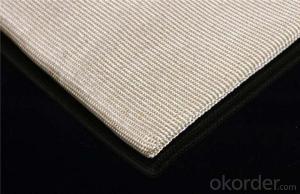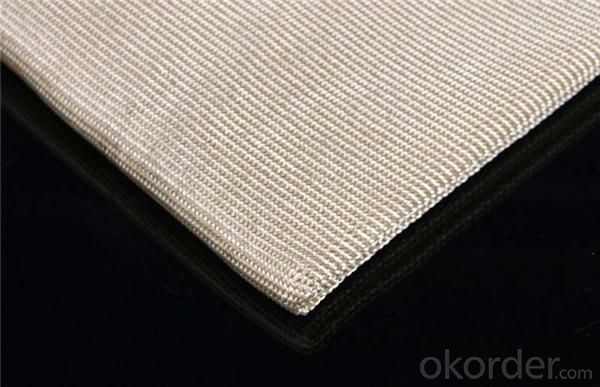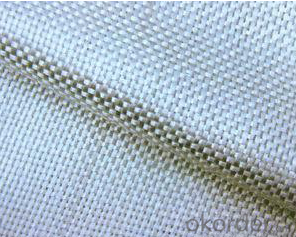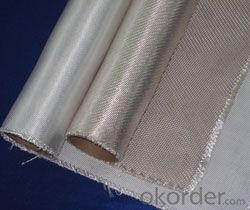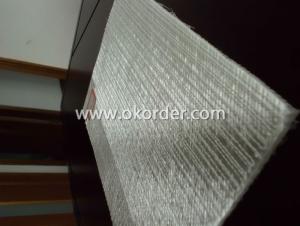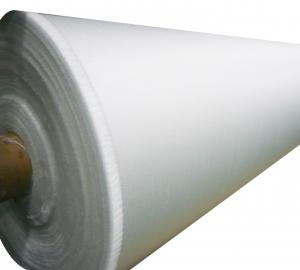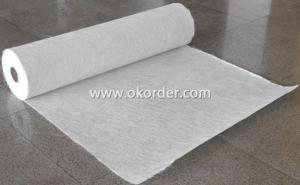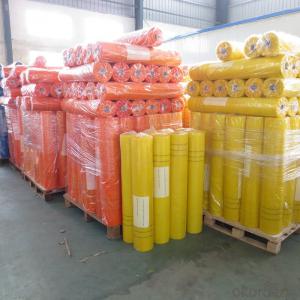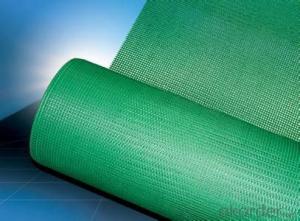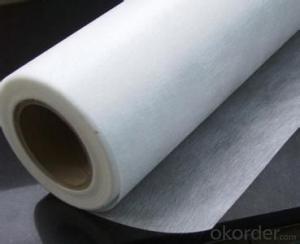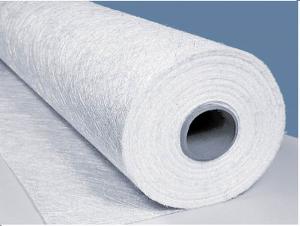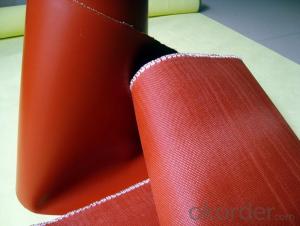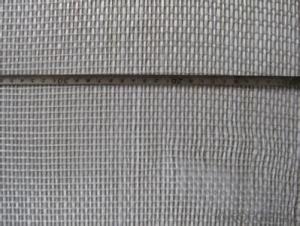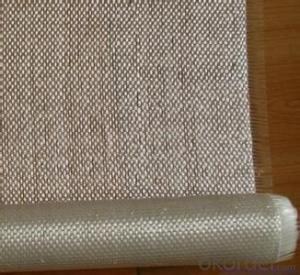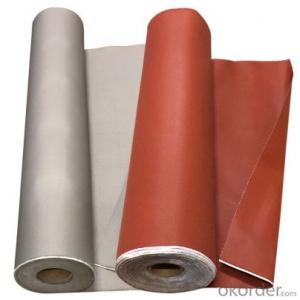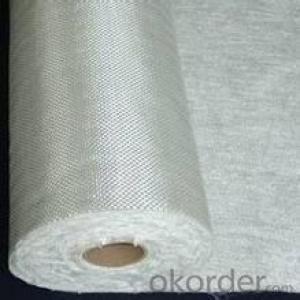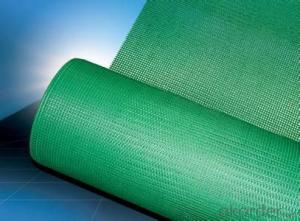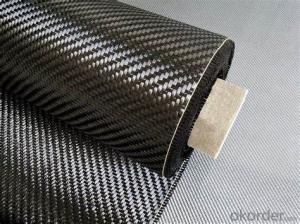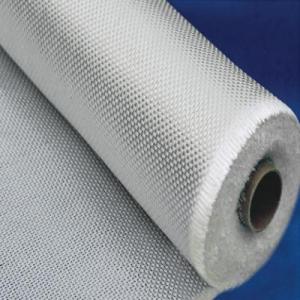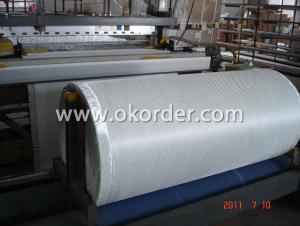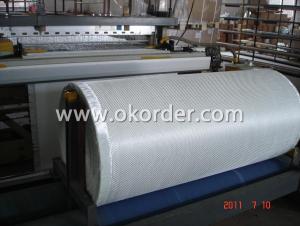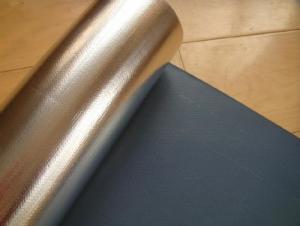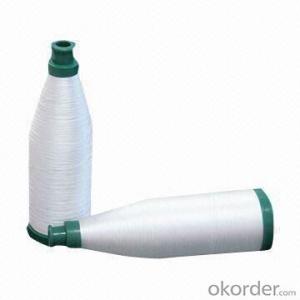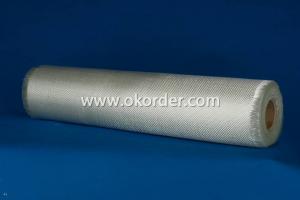Fiberglass Fabrics with Silica Fabric Superb Electronic Insulation and High Texturization
- Loading Port:
- China Main Port
- Payment Terms:
- TT or LC
- Min Order Qty:
- 20 m²
- Supply Capability:
- -
OKorder Service Pledge
OKorder Financial Service
You Might Also Like
1.Brief Introduction:
High silica texturized fabrics can be used for a long period of time without changing their properties perat the temperature of 1000℃ as it contains more than 96% silica.The performance of thermal insulation is excellent because of its texturized structure.
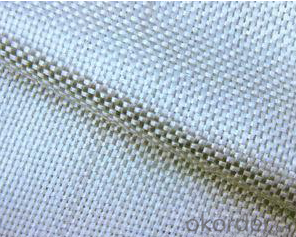
2.Properties
No asbestos orceramic,no harm to human
Low thermal conductivity,excellent thermal insulation,high resistance to thermal shock
Superb electric insulation
Inert to majority of chemical reagents
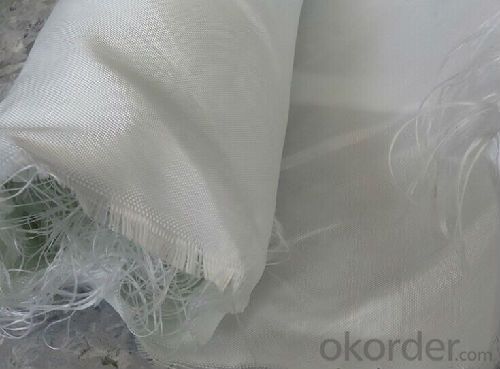
3.Application
Thermal insulation and protection for heavy machinery
Thermal insulation and protection for shipbuilding
Thermal insulation material for turbine
Thermal insulation and protection for metallurgy
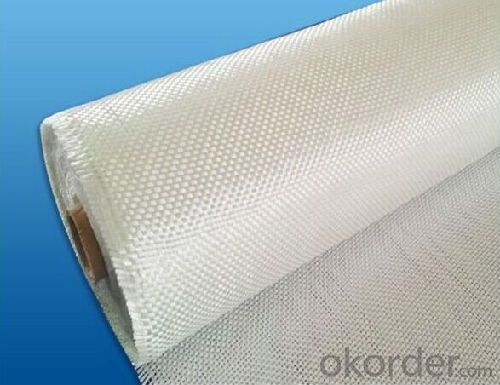
Specifications:
| Product Code | Area Weight gsm | Width cm | Thickness mm | SiO2 | OperatingTemperature ℃ |
| STP-600 | 600±30 | 100±1 | 0.8±0.05 | ≥96 | 1000 |
| STP-900 | 880±30 | 100±1 | 1.2±0.05 | ≥96 | 1000 |
Package:
Packed with carton and pallets.
FAQ:
1.What is the delivery time ?
15days after receiving the deposit
2.Are you a trading company or factory.
We are factory,and we have more than 10 years of experience.
- Q: Can fiberglass fabric be used for insulation panels?
- Yes, fiberglass fabric can be used for insulation panels. Fiberglass is a versatile material that is commonly used for insulation due to its excellent thermal properties. It has a low thermal conductivity, which means it can effectively prevent heat transfer. Fiberglass fabric can be used to create insulation panels by layering it between other materials such as foam or rigid boards. This combination helps to trap air and reduce heat flow, making it ideal for insulating walls, ceilings, and floors. Fiberglass fabric is lightweight, durable, and fire-resistant, making it a popular choice for insulation applications.
- Q: What is the difference between non-woven fabrics, glass fiber cloth and geotextile?
- Glass fiber cloth: glass fiber as raw material processing, mainly used in high temperature air filtration
- Q: Can fiberglass fabrics be used for protection against electromagnetic interference?
- Yes, fiberglass fabrics can be used for protection against electromagnetic interference (EMI). Fiberglass has excellent electrical insulation properties and is commonly used as a shielding material in various applications. It has a high dielectric strength, low electrical conductivity, and can effectively attenuate electromagnetic waves. When used as a fabric, it can be used to create EMI shielding curtains, blankets, or covers to protect sensitive electronics and equipment from external electromagnetic radiation. The woven structure of fiberglass fabrics provides a robust and durable shielding solution while allowing for flexibility and ease of use. Additionally, fiberglass fabrics can also provide thermal insulation and fire resistance properties, making them suitable for a wide range of applications requiring EMI protection.
- Q: Can fiberglass fabric be used for insulation in oil and gas facilities?
- Yes, fiberglass fabric can be used for insulation in oil and gas facilities. Fiberglass fabric is a commonly used material for insulation due to its excellent thermal properties, resistance to high temperatures, and its ability to withstand harsh environments. It is non-combustible and can effectively prevent heat transfer, making it suitable for insulating pipes, tanks, and equipment in oil and gas facilities. Additionally, fiberglass fabric is lightweight, flexible, and easy to install, making it a practical choice for insulation in these facilities.
- Q: How does fiberglass fabric handle UV exposure?
- Fiberglass fabric boasts exceptional UV resistance, making it highly resistant to the sun's damaging ultraviolet rays. This is due to the intricate weaving of fine glass strands, which naturally possess this resistance. Consequently, fiberglass fabric can endure prolonged exposure to sunlight without suffering significant degradation or weakening. Typically, the glass fibers in fiberglass fabric receive an additional protective layer, such as a resin or polymer, further enhancing their UV resistance. This coating acts as a barrier, shielding the glass fibers from direct contact with UV rays and preventing any potential damage. Moreover, this coating helps maintain the fabric's strength and integrity over time, even when exposed to harsh sunlight. Given its UV resistance, fiberglass fabric finds widespread use in outdoor applications that involve exposure to sunlight. The construction industry, for instance, frequently employs it for roofing, insulation, and cladding, while the automotive sector relies on it for various exterior components. The fabric's ability to withstand UV exposure ensures its durability and longevity in these applications. However, it is worth noting that although fiberglass fabric is highly resistant to UV rays, it is not completely impervious to their effects. Prolonged and intense exposure to sunlight can eventually result in minor degradation, such as fading or discoloration. This is a natural process that occurs gradually and has minimal impact on the fabric's structural integrity or performance. To preserve the longevity of fiberglass fabric when exposed to UV rays, it is advisable to apply a protective coating or finish specifically designed for UV protection. Regular cleaning and maintenance can also help extend the fabric's lifespan and ensure its continued resistance to UV exposure.
- Q: Is fiberglass fabric resistant to fire in public buildings?
- Yes, fiberglass fabric is indeed resistant to fire and is commonly used in public buildings for its fire-retardant properties. Fiberglass fabric is made from woven glass fibers that are highly heat resistant and do not easily catch fire. It has a high melting point, which means it will not ignite or support combustion easily. Moreover, fiberglass fabric is often treated with fire-resistant coatings or chemicals to further enhance its fire resistance. These properties make it an ideal material for use in public buildings, where safety and fire protection are of utmost importance.
- Q: Is fiberglass fabric suitable for high-temperature applications?
- Yes, fiberglass fabric is suitable for high-temperature applications. It is a durable and heat-resistant material that can withstand temperatures of up to 1000°F (538°C). Fiberglass fabric has excellent insulation properties, making it an ideal choice for applications that involve heat, such as insulation in ovens, furnaces, and industrial equipment. Additionally, its high strength-to-weight ratio and resistance to chemicals and abrasion make it a reliable option for high-temperature environments. It is important to note that the specific temperature range and capabilities of fiberglass fabric may vary depending on the grade and quality of the material.
- Q: How to distinguish the good and bad of aluminum foil glass fiber cloth? What is the plain glass fiber cloth, glass fiber cloth and twill satin glass cloth?
- Aluminum foil composite glass fiber cloth adopts unique advanced composite process, with composite aluminum foil surface smooth and smooth, high light reflectivity, vertical and horizontal tensile strength, airtight, waterproof, good sealing performance.
- Q: How long does fiberglass fabric typically last?
- Fiberglass fabric is known for its durability and longevity, making it a popular choice for various applications. The lifespan of fiberglass fabric can vary depending on several factors, such as the quality of the fabric, its exposure to external conditions, and how well it is maintained. On average, fiberglass fabric can last anywhere from 10 to 30 years. However, with proper care and maintenance, it is possible for it to last even longer. Regular cleaning, preventing excessive exposure to harsh chemicals or extreme temperatures, and avoiding physical damage can significantly prolong the lifespan of fiberglass fabric. It is important to note that fiberglass fabric can become brittle and lose its structural integrity over time, especially if exposed to continuous high temperatures or harsh environmental conditions. Additionally, natural wear and tear can also contribute to its eventual deterioration. To ensure the longest possible lifespan for fiberglass fabric, it is advisable to follow the manufacturer's guidelines regarding maintenance and care. Regular inspections for signs of damage or wear, and prompt repairs or replacements when necessary, can help extend the life of fiberglass fabric.
- Q: What are the differences in the quality and performance of domestic glass fiber cloth and imported fiberglass fabric?
- Imported glass fiber: it is made up of two layers of non-woven fabric and a layer of glass fiber. The layers are clear and the filter layer is thin. It is easy to break the water in the oil, and the accuracy is generally 1 - 25 microns
Send your message to us
Fiberglass Fabrics with Silica Fabric Superb Electronic Insulation and High Texturization
- Loading Port:
- China Main Port
- Payment Terms:
- TT or LC
- Min Order Qty:
- 20 m²
- Supply Capability:
- -
OKorder Service Pledge
OKorder Financial Service
Similar products
Hot products
Hot Searches
Related keywords
